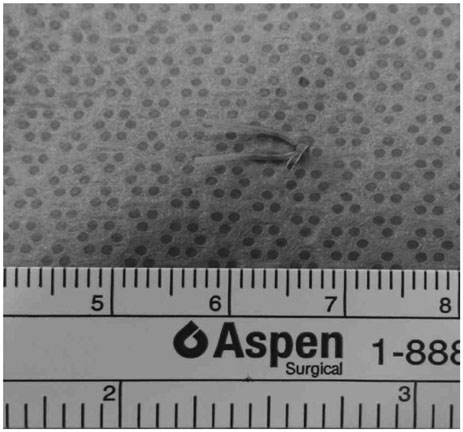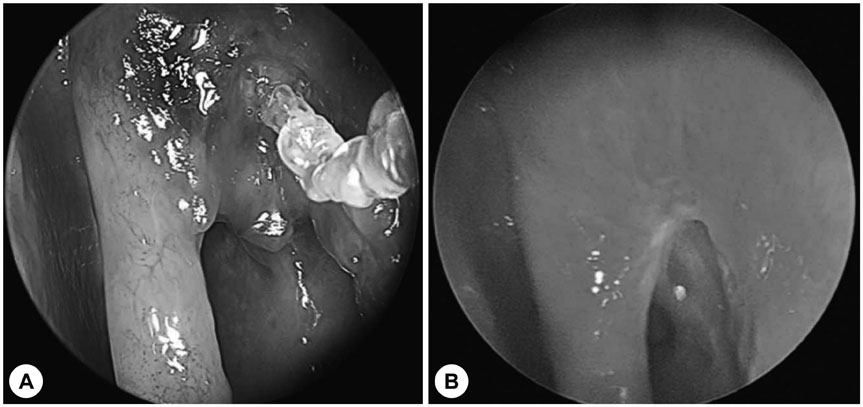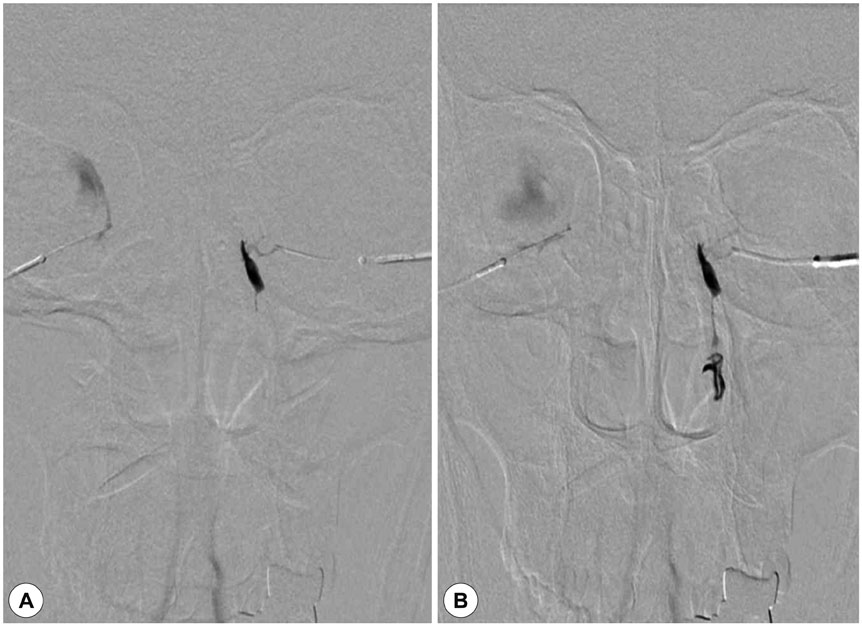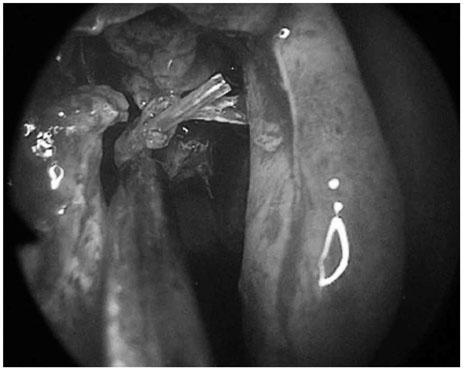J Rhinol.
2017 May;24(1):42-47. 10.18787/jr.2017.24.1.42.
Two Cases of Recurrent Nasolacrimal Duct Obstruction by Remaining Silicone Tube
- Affiliations
-
- 1Department of Otorhinolaryngology-Head and Neck Surgery, Dankook University, College of Medicine, Cheonan, Korea. jihunmo@gmail.com
- 2Department of Otorhinolaryngology-Head and Neck Surgery, Jeju National University School of Medicine, Jeju, Korea.
- KMID: 2379789
- DOI: http://doi.org/10.18787/jr.2017.24.1.42
Abstract
- Endoscopic dacryocystorhinostomy (DCR) is a widely used procedure for nasolacrimal duct obstruction. Because endoscopic DCR has shown higher success rate, fewer complications, and better cosmetic outcome compared to the conventional external approach, it has replaced the external approach. However, since the openings of the nasal cavity formed during surgery are small, recurrence often occurs due to stenosis caused by granuloma formation or the silicone tube. Hence, it is important to remove the silicone tube before granuloma formation around the openings of the nasal cavity after surgery. Failure to remove the silicone tube at the appropriate time can cause inflammation, resulting in granuloma formation. We recently experienced two cases of recurrent nasolacrimal duct obstruction caused by a remaining silicone tube. Here, we present these cases with a brief review of the literature.
MeSH Terms
Figure
Reference
-
1. Bartley GB. Acquired lacrimal drainage obstruction: An etiologic classification system, case reports, and a review of the literature. Ophthal Plast Reconstr Surg. 1993; 9(1):11–26.2. Tarbet KJ, Custer PL. External dacryocystorhinostomy: Surgical success, patient satisfaction, and economic cost. Ophthalmology. 1995; 102(7):1065–1070.3. Rosen N, Sharir M, Moverman DC, Rosner M. Dacryocystorhinostomy with silicone tubes: Evaluation of 253 cases. Ophthalmic Surg. 1989; 20(2):115–119.
Article4. Bedrossian RH. Silicone intubation of the lacrimal drainage system. Ophthalmic Surg. 1979; 10(9):39–44.5. Rootman DS, Insler MS, Wolfley DE. Canaliculitis caused by Mycobacterium chelonae after lacrimal intubation with silicone tubes. Can J Ophthalmol. 1989; 24(5):221–222.6. Becker BB. Retained veirs rod and canaliculitis. Am J Ophthalmol. 1991; 111(2):251–252.
Article7. Henderson JW. Management of strictures of the lacrimal canaliculi with polyethylene tubes. Arch Ophthal. 1950; 44(2):198–203.
Article8. Gibbs DC. New probe for the intubation of lacrimal canaliculi with silicone rubber tubing. Br J Ophthalmol. 1967; 51(3):198.
Article9. Quickert MH, Dryden RM. Probes for intubation in lacrimal drainage. Trans Am Acad Ophthalmol Otolaryngol. 1970; 74(2):431–433.10. Wolter JR, Sugar A. Reactive membrane on a foldable silicone lens implant in the posterior chamber of a human eye. Ophthalmic Surg. 1989; 20(1):17–20.
Article11. Walland MJ, Rose GE. The effect of silicone intubation on failure and infection rates after dacryocystorhinostomy. Ophthalmic Surg. 1994; 25(9):597–600.
Article12. Ruby AJ, Lissner GS, O'Grady R. Surface reaction on silicone tubes used in the treatment of nasolacrimal drainage system obstruction. Ophthalmic Surg. 1991; 22(12):745–748.
Article13. Lee TS, Kim SW. The effects of placement of bicanalicular silicone tube and silicone stent on granuloma formation in endoscopic intranasal dacryocystorhinostomy. J Korean Ophthalmol Soc. 1999; 40(1):16–22.14. Kim YW, Park SY, Oh JH, Kim BG. A case of nasal polypoid mass originated from nasal foreign body. J Rhinol. 2012; 19(2):145–148.
- Full Text Links
- Actions
-
Cited
- CITED
-
- Close
- Share
- Similar articles
-
- Management of Prolapsed Silicone Tube Inserted for Treatment of Nasolacrimal Duct Obstruction
- Treatment of Congenital Nasolacrimal Duct Obstruction Using Silicone Intubation Set
- Result of Partial Nasolacrimal Duct Obstruction After Silicone Tube Intubation
- Silicone Intubation for Nasolacrimal Duct Obstruction in Adult
- Silicone Intubation in Children with Nasolacrimal Duct Obstruction







